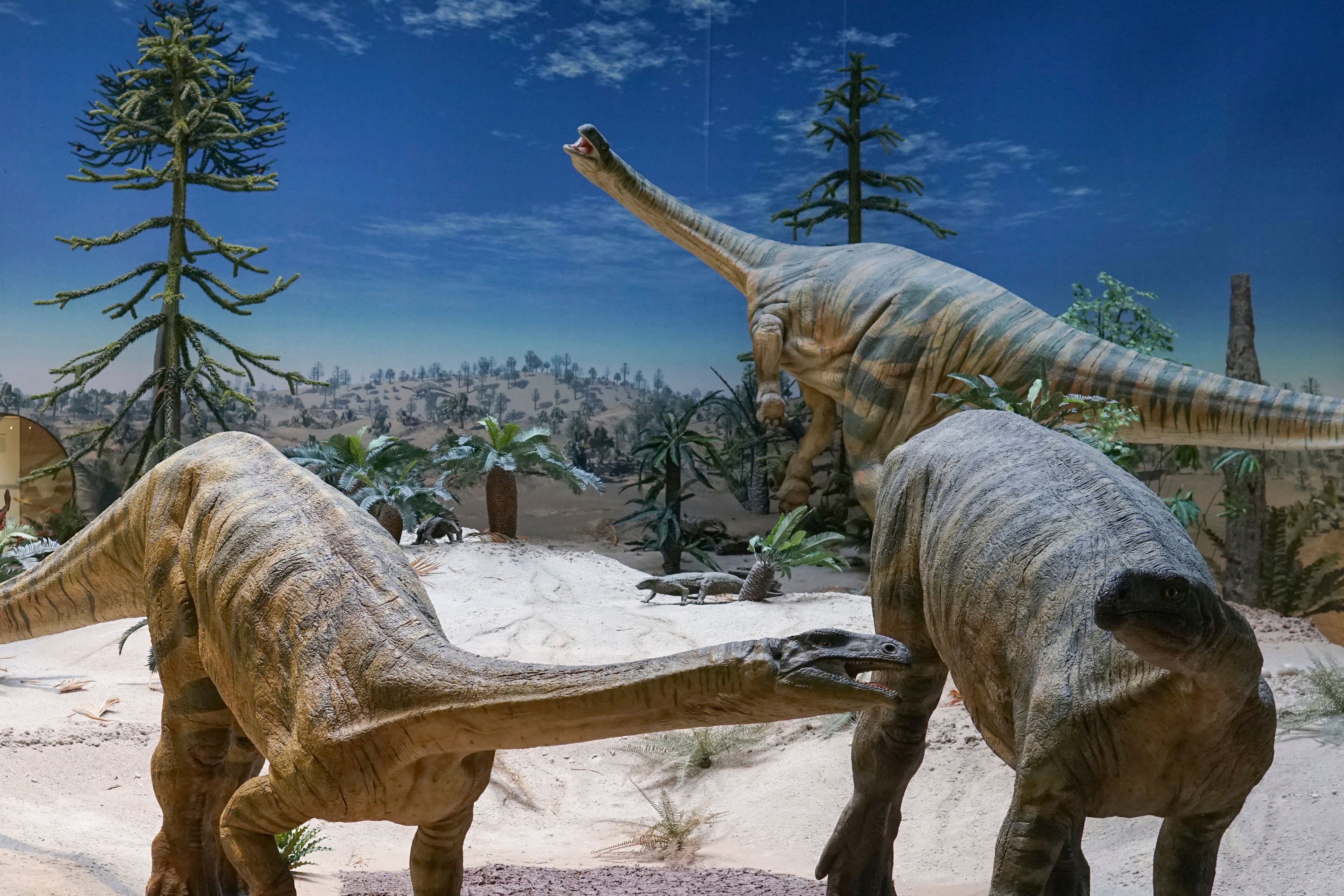Some dinosaur migration was delayed by climate, study shows
A new study finds plant-eating dinosaurs arrived in the Northern Hemisphere millions of years after their meat-eating cousins

Your support helps us to tell the story
From reproductive rights to climate change to Big Tech, The Independent is on the ground when the story is developing. Whether it's investigating the financials of Elon Musk's pro-Trump PAC or producing our latest documentary, 'The A Word', which shines a light on the American women fighting for reproductive rights, we know how important it is to parse out the facts from the messaging.
At such a critical moment in US history, we need reporters on the ground. Your donation allows us to keep sending journalists to speak to both sides of the story.
The Independent is trusted by Americans across the entire political spectrum. And unlike many other quality news outlets, we choose not to lock Americans out of our reporting and analysis with paywalls. We believe quality journalism should be available to everyone, paid for by those who can afford it.
Your support makes all the difference.Plant-eating dinosaurs probably arrived in the Northern Hemisphere millions of years after their meat-eating cousins a delay likely caused by climate change, a new study found.
A new way of calculating the dates of dinosaur fossils found in Greenland show that the plant eaters, called sauropodomorphs, were about 215 million years old, instead of as much as 228 million years old, as previously thought, according to a study in Monday’s Proceedings of the National Academy of Sciences.
That changes how scientists think about dinosaur migration.
The earliest dinosaurs all seemed to first develop in what’s now South America about 230 million years ago or longer. They then wandered north and all over the globe. The new study suggests not all dinosaurs could migrate at the same time.
So far, scientists haven’t found any example of the earliest plant-eating dinosaur family in the Northern Hemisphere that’s more than 215 million years old. One of the best examples of these is the Plateosaurus, a two-legged 23-foot (7-meter) vegetarian that weighed 8,800 pounds (4,000 kilograms).
Yet scientists find meat-eaters were pretty much worldwide by at least 220 million years ago, said Randy Irmis, a paleontologist at the University of Utah, who wasn’t part of the research.
The plant eaters “were late comers in the Northern Hemisphere,” said study lead author Dennis Kent, of Columbia University. “What took them so long?”
Kent figured out what probably happened by looking at the atmosphere and climate at the time. During the Triassic era, 230 million years ago, carbon dioxide levels were 10 times higher than now. It was a hotter world with no ice sheets at the poles and two bands of extreme deserts north and south of the equator, he said.
It was so dry in those regions that there were not enough plants for the sauropodomorphs to survive the journey, but there were enough insects that meat-eaters could, Kent said.
But then about about 215 million years ago, carbon dioxide levels briefly dropped in half and that allowed the deserts to have a bit more plant life and the sauropodomorphs were able to make the trip.
Kent and other scientists said Triassic changes in carbon dioxide levels were from volcanoes and other natural forces — unlike now, when the burning of coal, oil and natural gas are the main drivers.
Kent used changes in Earth's magnetism in the soil to pinpoint the more exact date of the Greenland fossils. That highlighted the migration time gap, said several outside experts both in dinosaurs and and ancient climate.
Kent’s theory about climatic change being the difference in dinosaur migration “is super cool because it brings it back to contemporary issues,” said Irmis.
It also fits with some animals around today that have migratory issues that keep them away from certain climates, said Hans-Otto Portner, a climate scientist and biologist at the Alfred Wegener Institute in Germany who wasn’t part of the study.
While the study makes sense, there is one potential flaw, said University of Chicago dinosaur expert Paul Sereno: Just because no fossils of plant-eaters older than 215 million years have been found in the Northern Hemisphere, that doesn’t mean there were no sauropodomorphs. The fossils just may not have survived, he said.
___
Follow Seth Borenstein on Twitter at @borenbears.
___
The Associated Press Health and Science Department receives support from the Howard Hughes Medical Institute’s Department of Science Education. The AP is solely responsible for all content.